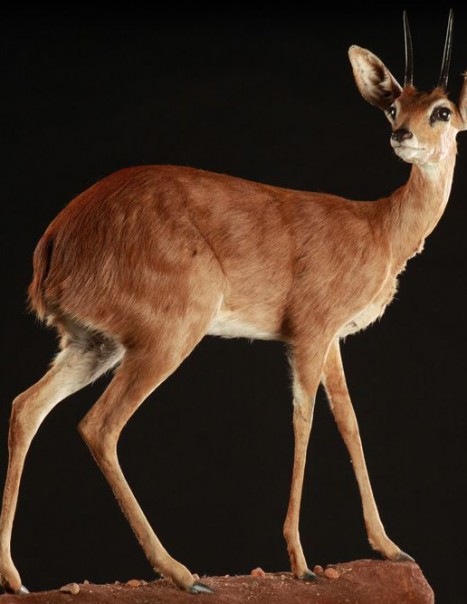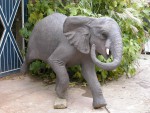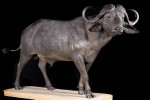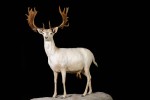Dik-dik – Madoqua
Dik-dik – Madoqua
The dik-dik is a dwarf antelope which measures from 30 to 43 cm.
Its name comes from the sound it makes when it is in danger, they weigh from 3 to 5 kg. They have an elongated snout and a slight gray fur on the back and white on the belly. On the top of the skull, the coat forms a straight tuft, which sometimes hides partially short horns of the male.
There are four dik dik species:
- Gunther’s dik-dik, Madoqua gunther
- Kirk’s dik-dik, Madoqua kirkii
- Silver dik-dik, Madoqua piacentinii
- Salt’s dik-dik, Madoqua saltiana
Females are slightly larger than males. They have relatively short horns, which are 3 to 7.5 cm, inclined rearwardly. The Dik-dik head sometimes seems disproportionate compare to the small body of the animal. The upper body is gray-brown, while the ventral and legs are light brown, they have a pale ring around the eye.
They live mainly in Africa and habitats where grass and edible shrubs are abundant, but their favorite dishes is the foliage. They live in Great Plains among other herbivores such as giraffes and antelopes. They can also live in dense forests, but they require a good hedge against predators and a small amount of large plants, they move as soon as the grass is too high and prevents them from seeing. They usually live as a couple and enjoy the tracks created by man to block others dik-dik, especially females.
These monogamous feed at night, at dawn and after dusk. These herbivores feed on leaves, shoots, fruits, berries and leaves of acacia. They live their whole lives with the same partner. At birth, calves weigh about 0.7 kg. They reach adulthood between 6 and 8 months.
Its behavior is quite unique face to a predator, they stop in front of it, and when the predator attack, they simply dodge it by making a quick start followed by a new asset. Their predators include monitor lizard, python, caracal, lion, leopard cheetah, hyena, wild dog and jackal.





